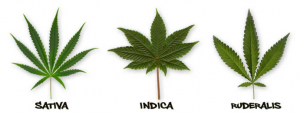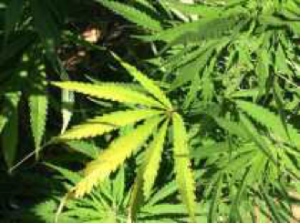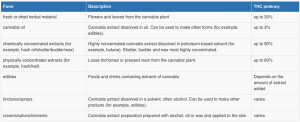What is Cannabis?
The Cannabis Act has been issued for quite a while now, but not many of us are fully aware of what Cannabis is and why it is so important to enforce a law for it. The cannabis we speak of today often includes but are not limited to pot, weed, marijuana, Ganja, dope, or 420. After more than 90-years of cannabis prohibition in Canada, these “underground” names are now brought together by a common word now known as cannabis. Cannabis is derived from dried plant phenotype species — Cannabis sativa, Cannabis indica, or Cannabis Ruderalis, where all contains mind altering chemical compounds.

Photo by Cannapedia
It grows wild in many of the tropical and temperate areas of the world. However, it can now be grown in almost any climate, and is increasingly cultivated by means of indoor hydroponic technology.

Photo by National Institute on Drug Abuse
Chemical Substances in Cannabis
Cannabis contains hundreds of chemical substances and over 100 of these are known as cannabinoids. Cannabinoids are made and stored in the plant’s trichomes, a tiny, clear hairs that stick out from the surfaces of flowers and leaves of the Cannabis plant. Cannabinoids can change how cell receptors in the brain and body behave and communicate with each other.
The main active Cannabinoid is called delta-9 tetrahydro-cannabinol or referred to as THC. This is the part of the plant that is responsible for giving people the “high” and often times intoxication. THC has some therapeutic effects but also has harmful effects. These harmful effects may be greater when the concentration or THC potency is higher.
Cannabidiol or CBD is another cannabinoid, but does not produce intoxication in the body or make people “high”. There is some evidence that CBD may hinder effects of THC on the mind. This occurs when the amount of CBD in the cannabis is the same or higher than the amount of THC. CBD is being further studied for its possible therapeutic applications.
Effects of Cannabis Usage
Although there are several types of Cannabis and many are consumed or used very differently, the extent of its effect is determined by the potency of THC content inside each dosage.

Photo by Health Canada
In the short run, smoking cannabis will allow THC to travel quickly from the lungs into the bloodstream, where the blood carries the chemical to the brain and other organs throughout the body. Hence, the THC chemical compound will over-activate the receptors in you brain, which gives people the “high” due to heightened senses. The body absorbs THC more slowly when a person eats or drink it, where the effect usually comes in after 30 minutes.
Short term effects include:
- Altered senses (taste, sights, smell, sound, and even time)
- Impaired brain functions (memory, attention, and learning)
- Change in mood
- Hallucination, delusion, and psychosis (when consumed at high doses)
The long term effects of cannabis consumption are still being studied across the world, but through several longitudinal studies, it is shown that there is a significant decline in general knowledge and verbal abilities between preteen ages and early adulthood. However, in studies where people started cannabis consumption as adults, the results did not show a notable decrease in mental abilities but increased risks of addiction after long term consumptions.
Long term effects include:
- Lose of memory, concentration, intelligence (effects are greater when started at adolescence)
- Lung diseases (chronic cough, respiratory diseases like bronchitis or even cancer, lung infection)
- Addiction
I hope after reading this blog all of you will be more aware and considerate about Cannabis and its consumption effects.
By: Robin Yuyang Wei
